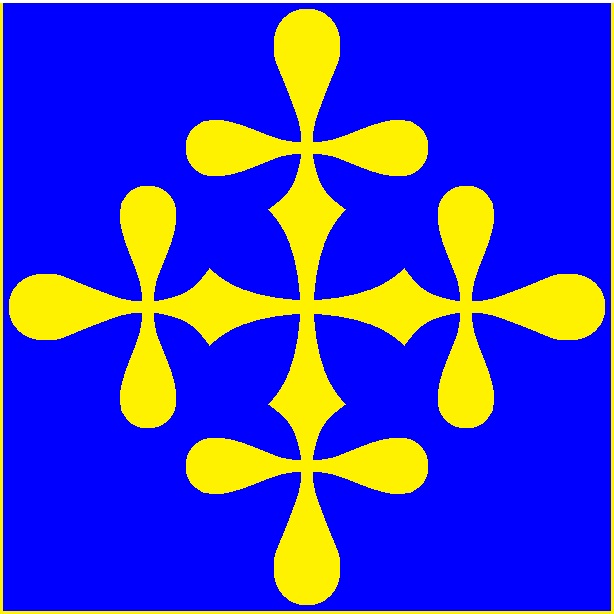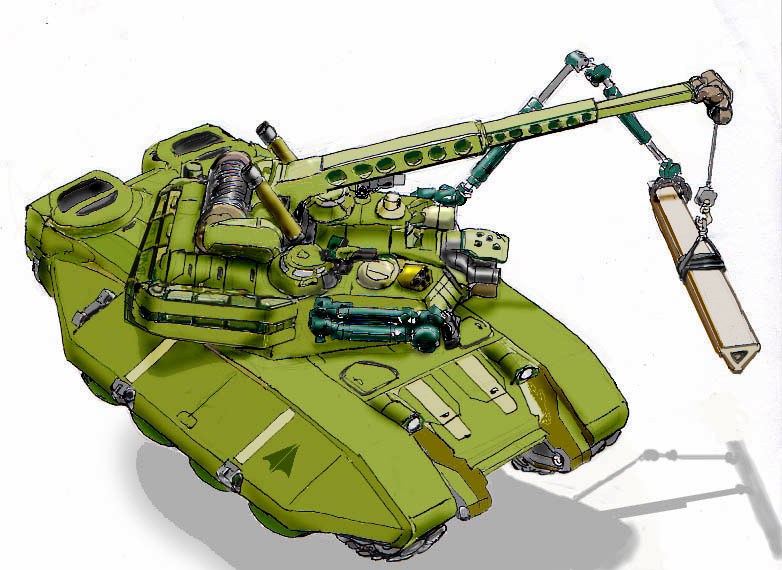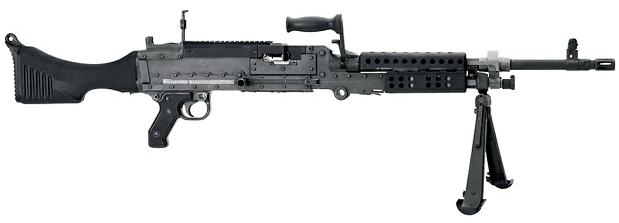  | |||||||
|---|---|---|---|---|---|---|---|
| One of the dirty secret of grav pod technology is it doesn't like sudden drops; Trenches of greater than 10' can easily defeat a tank, if it's wide enough. With this in mind, the Bridge layer tanks were common enough before the Global Civil War; Every nation capable of deploying armored vehicles, even technical, had some sort of bridge-laying capability. Only few had automated capabilities, however. The bridge's length is a MINIMUM of 20', but can be extended up to 50' simply enough. Beyond this length, however, the bridge needs a stanchion or pillar to support it. One of the more brazen strategies in this direction is to lay the bridge, then send a team of engineers over it with fascine (bundled tree limbs) to drop down. The bridge is then pulled back, repositioned over the fascine, and set down. Though not usually effective in and of itself, it can be used to support the bridge long enough to allow a proper support work to be brought in, and generally is strong enough to support light vehicles, and even guntrucks. This minor support structure means a proper support structure can be built an in place in as little as 30 minutes; A proper support structure can support full-fledged combat vehicles. The hullframe of the Badger is ancient technology; Like the M-221 Grant Hovertank, the hull frame is the GCW-Era American M-1 Abrams MBT, upgraded to UGC technology with Hydrocell engines and grav-pods; However, because of the mine-clearing duties the vehicle may be assigned to, treads are still needed for certain stages (some mines are designed to detonate upon detection of focused gravity waves). The bridge lain can support any ground-capable vehicle in the UGC- Even the PLANETMASTER-Class assault shuttle, though such large vehicles require TWO bridges, not because of the weight but because of the beam of the vehicle. The Badger can also be fitted for mine clearing using focused laser, chain flail, and deep-rip plow, as a repair vehicle for other tanks, and almost any other type of engineering duty; The possibilities are limited solely by some tanker's wild imaginations (and some of them are "imaginative" indeed). Mine clearing is also a major reason for the use of treads; There are mines designed to activate on grav pod waves, and these are much more effective than those designed to activate on weight or seismic effects. The E-664 can also tow just about anything in the UGC's standard inventory, from engineering trailers (trailers filled with engineering equipment, like Marston Mats), to combat gear (such as the SLAMM), to other vehicles; Any ground-effect vehicle, in fact. Badgers routinely carry spare grav clamps, which can be placed on the underside of a disabled vehicle, then plugged into the Badger, allowing them to be towed to a proper repair facility (or at least out of the line of fire). When all else fails, the turret of the Badger can be replaced with a standard REF-Era Gladiator, using it's arms to do manual labor; Though this is certainly not the most efficient way to utilize the badger, there are some circumstances that demand it (such as construction of certain components of power plants, most especially Reflex and nuclear reactors, and repairs on Landships). The switch out takes about 4 hours either way and only requires another heavy lifter- Which is easily enough accomplished by another badger. The Badger has also had a profound influence in the civilian sector; Several civilianized clones have been developed, most notably the Advart Tractor, which has all of the major Badger variant equipment (with the exception of the anti-mine flail); Like the Badger, the Advart can use grav pods or wheels, which themselves can be covered with flexible tracks- A feature the Badger lacks. This allows the Advart to be run over rough terrain or on roads safely (tracks tear up roads far too quickly). Name: E-664 Badger. Model Type: Engineering Vehicle. Class: Military Tracked and Hover Armored Engineering Vehicle. Crew: 2; Pilot/commander, Commander/Pilot. (The second and tlack of general interesthird titles are their secondary job, the First title their primary job.) Both are fully qualified engineers. Passengers: Can hold 2 passengers internally (if a little cramped), or up to 20 (or more) externally (riding on the hull). MDC By Location: | |||||||
| Tank Hull- Crew Compartment- Grav Pods (16; 8 each side)- Rear Jet Thrusters (2)- Lifting Gear (Boom)- | 300 200 150 each 150 each 50 | Bridge- Mine Shield- Flail- 25MM Auto Cannon- MM-60- | 200 20,000 200 100 10 SDC. | ||||
| Notes: Usual penalties apply. Speed and Statistical Data:. | |||||||
| Speed: Grav Pods: 400 MPH max. NOTE: Due to the use of gravity pods, there is NO physical terrain that they can't traverse sort of hills over 15 feet high and 50º; Even then, they can cover it with a running start, but this is the upper end of their limits. Treads: 150 MPH max. Hovering Height: From 2 to 15 feet: WARNING: Higher flight causes a 02% loss of piloting control per foot (-30% at maximum 15 foot hover height). On Water: High surface-water worlds (such as Terra) are known to fit out their hovertanks with out-board engines, giving some effectiveness on the water; Speed: 10 knots Range: 200 miles. The grav pods WILL work over water. Maximum Range: 3,000 miles (483 km) Height: 6 feet, 4 inches with the bridge in the STOWED position (the higher position). Lifting booms (if installed) decrease the clearance to 7 feet 2 inches. Width: 10 feet 6 inches (3.2 meters). | Length: 20 feet. The Bridge is 25 feet, but fully extended it can cover 50 feet, plus the 5 foot extension area, making it potentially 75 feet long. Weight: 80 tons with most gear; 105 tons with mine clearing gear. Powerplant: HRTY-44.8A Hydro-Cell engines; Output: 62,000 Kwh Hover System: Normal grav pods. Cargo Capacity: Crew supplies only; About 1 ton of various cargos are known to be tied onto the hull, but this is not the true purpose of the tank. Also, such cargo is subject to any environmental factors (including chemical, biological, and nuclear/Reflex weapons). Cost and Availability: Each tank costs 500,000credit; Always available. Black Market Cost and Availability: 150,000credit. If fitted, any extra weapons systems will add to the cost of the tank. Occasionally available, but only for the newness and lack of general interest. | ||||||
| Weapon Systems: | |||||||
| 01. Engineering Equipment: Though not weapons per se, the engineering equipment is the reason for the tanks being, and therefore are not considered "Features." While all Badgers have bridge layers, most have one or two additional pieces of engineering equipment as well. (All mine clearing gear combined are considered "one piece", as are Lifting gear, etc.) Types: Bridge Laying Gear; Can support up to 100,000 tons if properly erected. Include the span, Shoring Struts (legs for extended cavities), fascine, and a Bailey Bridges "can" be towed behind. Range: 20 to 50 feet; Must be shored at BOTH ends; Use Time: Takes five melees to fully deploy; Effective Payload: Only one, but can be re-used indefinitely. Mine Clearing Gear; Uses a combination of a large plowing shield, a flail, and a turret laser to destroy all the mines IN THE PATH OF THE TANK. This clear area can be widened to three times that area, but only to about 50% effectiveness. The Shield and fail aren't intended to actually detonate the mines, but merely to knock the out of the way or break them; However, occasionally they do in fact detonate on, and then the operation must be stopped to check the shield (the most important part of the gear) to ensure it isn't damaged. Range: about 10 yards Use Time: Infinite, but mine clearing must be stopped when a detonation occurs to ensure the shield isn't damaged. Effective Payload: Unlimited plus about a million. Boom And Hook; A simple telescoping boom and 5-part hook (crane). Each part has a breaking strain of 20 tons, so it can support up to 100,000 tons if properly used. Range: 8 to 100 feet; Use Time: Takes 2 melees to fully deploy; Effective Payload: 100,000 tons at 100' maximum. Plasma Welder: Heats up any two or more pieces of metal allowing them to be joined. Not intended as a weapon. Effect: Welds metals together (2D6 MD). Rate Of Fire: Once per melee, but for a full melee. Payload: Unlimited. Laser Cutter: A simple laser cuts any metal. Effect: Cuts metal (1D4 MD per melee). Rate Of Fire: Once per melee, but for a full melee. Payload: Unlimited. | 02. 25MM Auto Cannon: Uses depleted uranium rounds (which spall and hyper-incinerate on impact). Can be used for self-defense or mine clearing, or just to tear up an embankment on the other side of a ravine (for bridgelaying). MD: Short Burst: 1D6; Medium Burst: 2D6; Full Melee Burst: 4D6 Blast Radius: 1.5 feet Range: 3,200 feet; Utilizing stratospheric gravimetrics, this can be multiplied TEN TIMES, but is -1 strike every other multiple (-5 at maximized range). Rate of Fire: Per gunner. Payload: 400 rounds.
Damage: 5D6 times 10 per 10-round burst (only fires bursts). Range: 3,000 feet; Utilizing stratospheric gravimetrics, this can be multiplied TEN TIMES, but is -1 strike every other multiple (-5 at maximized range). Rate of Fire: Payload: 400 rounds per canister; Up to 6 canisters can be carried, but reloading requires the commander to climb out the copula, pull the box out, clear the empty canister, load up the gun, and cycle the gun TWICE; Takes one full melee, and removes the tanks vacuum seal and NBC protection for ten minutes. | ||||||
| Features: | |||||||
|
| ||||||
| |||||||


